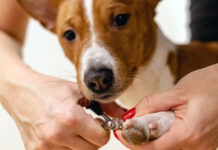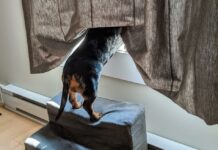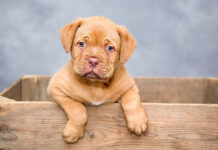If you are reading this article you might be thinking about buying a puppy; or already bought on. Congratulations on the new addition to your home! You now have a friend who is always ready to play, never too tired to go for a walk and one of the most loyal companions you will ever have. There are some things you are going to need to know about training your puppy. A puppy is only as well-behaved as his training allows.
During the first few weeks your puppy needs constant supervision to prevent accidents in the house. But it’s easier to teach good habits now than it is to correct bad behavior later in life. Your puppy needs to start understanding what is and isn’t acceptable in your home right away. You are the leader of the pack in the home and your puppy looks to you to work out what is allowed and what isn’t.
It’s important that your puppy starts to understand their boundaries. You will need to decide soon what the limits are – what furniture they may or may not climb on – what areas of the house they are allowed. Decide where your puppy will sleep and what they may or may not chew on.
Getting your puppy housetrained is not difficult and can be quick if you follow some of these tips. Make housetraining a painless and quick procedure by using the crate method.
The Crate method
The crate method is well known because it is one of the most humane ways to train a puppy. Your puppy will need to relieve himself after eating, drinking, running, playing. The frequency will depend on the size of your dog and also on the breed. Be careful – it can happen as soon as 15 minutes after any of these activities. One of the easiest ways to keep your home pee free is to keep a record of when he needs to go. Try to learn the natural schedule and take your puppy outside at the times when you know they are going to need to go. Plan your walks around this schedule. Take the puppy out when you expect they will need to urinate.
When your puppy is 10 weeks old until they are six months they will need to be walked between 5 and 10 times a day. Quite a task if you are not used to including a puppy in your daily schedule. Take turns walking the puppy. One of the most important things about housetraining you pup is that you do not return from your walks until he/she has urinated and done all his business.
If for some reason you need to go inside before he has gone you will need to take your puppy out every 15 minutes. Give lots of praise and affection when your puppy has done what you wanted. You might feel silly praising your puppy for going “wee wee” (or other!) but it is very important to the housetraining process.
Some tips for using the crate:
The crate method works and is one of the most humane ways to train your puppy. It works because dogs are naturally neat and don’t like to eliminate in their sleeping area. If your puppy sleeps in the crate they will not want to mess in it. It’s an instinctive desire to keep their sleeping area clean.
The crate should become a sanctuary for your puppy. A crate is your dogs’ den in the house; their very own ‘safe space’. Your puppy needs to associate the crate with positive feelings. Put your puppy’s favorite blanket, toys and treats inside.
Help your puppy get used to the crate by leaving the door open until the dog seems comfortable. It’s important that your puppy is comfortable in the crate – the more comfortable they are – the less likely they are to soil inside.
Never use the crate as punishment. The crate must be associated with positive feelings. If your puppy does start whining, barking or scratching don’t let them out. Establish a regular schedule. After feeding take you puppy outside until they have done their business.
Put your puppy in the crate at night – but make sure to take him outside before bedtime and first thing in the morning. Let your puppy play for a while after they have done their business. Don’t give your puppy free reign of the house until they are housetrained.
Make a chart of when your puppy needs to go. Take the puppy outside within 15 minutes of eating, or any other time you know they will need to go.
After they have done their business; play with them for a while and then put your puppy in the crate for a nap. Repeat this throughout the day. After your puppy is fully housetrained you can leave the crate open during the day.
Some do’s and don’ts when housetraining:
DO
– If you are going to be away for long periods of time put your puppy in an area of the house where you are prepared for accidents. Put newspaper in this area.
– Limit the food and water supply if you are going to be gone for long periods of time. If it’s hot make sure your puppy has enough to drink (but remember what goes in must come out!).
– Praise your puppy when they are good.
– Be consistent. You don’t want to confuse your puppy.
– Involve the whole family in the training process. Even small children can participate in the housetraining.
– Be realistic, you can’t get mad with a puppy for not being completely housetrained. Accidents happen despite your most careful schedule.
Don’ts
– Don’t ever use the crate as punishment.
– Don’t let your puppy outside of your designated area until they are housetrained.
– Don’t reprimand your puppy for accidents.
If this all sounds like a lot of work – don’t worry. Your puppy should be completely housetrained after about 6 months. Even sooner if you use the crate method. As your puppy gets older it will get easier. A well trained puppy will bring much more happiness into the home then an untrained puppy. Owner and puppy will be more happy and in tune with each other for years to come.




















